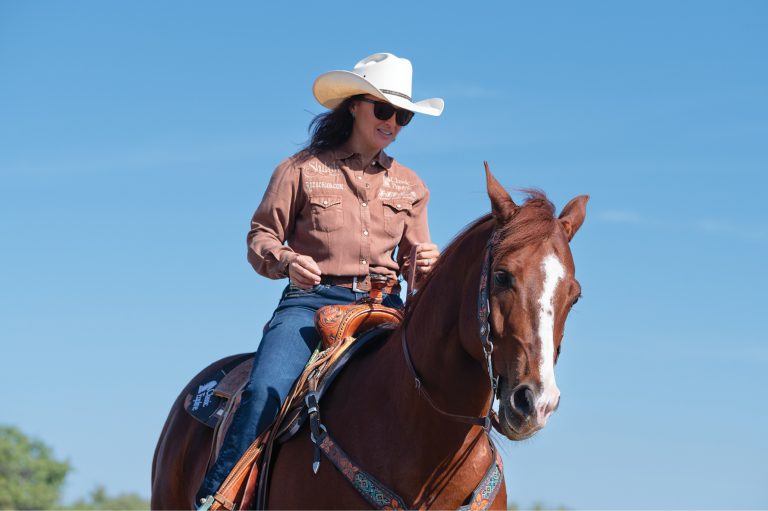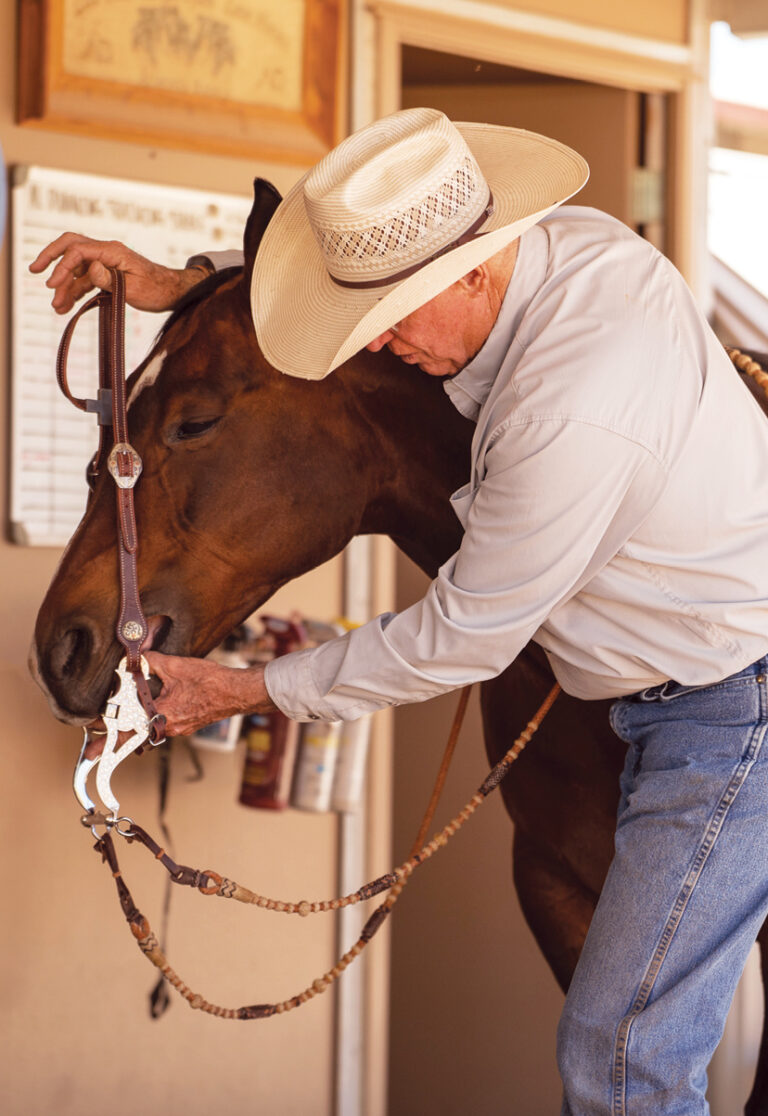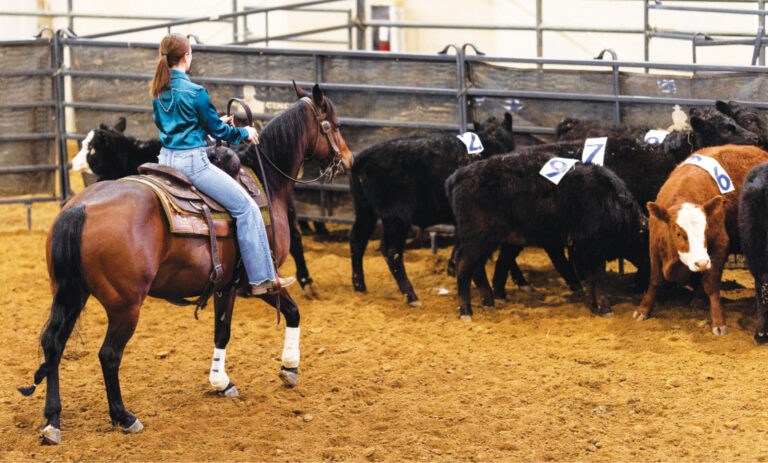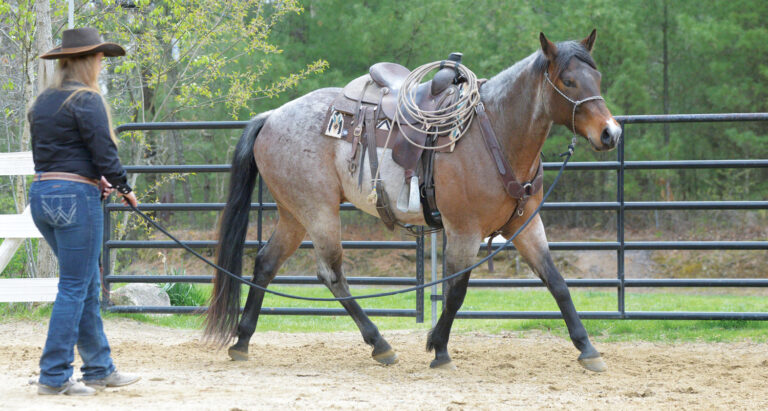Know the difference between a fad and a trend? A fad starts fast and ends fast. A trend starts slow and lasts far longer than a fad. Gimmicky bits are like fads: They come and go. Good bits are more like trends: They stick around.
I’ve been in this business for decades. I’ve tried every gimmicky bit out there. For the first week, I’ll put it on every horse in my barn. After that it’ll hang in my tack room, collecting dust for the next 20 years.
Why? Because I find that I always go back to the same tried-and-true bits. The four I’ll talk about here are some of the best bits I know of. That’s why they’re so popular with me, and with other horsemen. They work. Horses love them. And they don’t “trick” the horse.
That’s the problem with most gimmicks: Your horse may fall for the trick when he’s wearing that bit, but the instant you put a show-legal bit without the trick on him, he’s smart enough to know it. And that can lead to problems in the show pen.
Note: While one of the following bits isn’t show-legal, it complements the action and feel of its show-legal cousin, which is why I included it.
Bit #1: Show Snaffle
The specs: A smooth-mouth, show-legal O-ring snaffle, with a narrow-diameter and sweet-iron mouthpiece. (The leather strap around the rings keeps them in position.) As you can see, it’s totally gimmick-free.
Why it works: The tapered mouthpiece makes it a touch less mild than a larger-diameter mouthpiece, so you get a tad more feel and control without hurting or scaring your horse. Independent movement of the rings and mouthpiece causes the mouthpiece to vibrate with the slightest rein movement, which can help keep a horse soft, light, and responsive.
Training stage: Use this as a step up from a smooth-mouth snaffle with a fatter mouthpiece (which is what I start my youngsters in). If a horse stays soft and responsive in it, I’ll use it in his training and in the show pen until he’s ready to graduate to a leverage bit.
Problems it can solve: It can lighten up a horse that’s dull to, and trying to push through, a milder snaffle.
Bit #2: Half-and-Half Training Snaffle
The specs: An O-ring training (not show-legal) snaffle with a sweet-iron mouthpiece that’s half smooth, half twisted wire, hence the name.
Why it works: The smooth portion, which lies on the bars of your horse’s mouth, won’t damage them. The twisted-wire portion, which lies over the horse’s tongue, gives the bit more “bite” than a smooth-mouth snaffle. Plus, for reasons I can’t explain, 100 percent of my horses love this bit. That’s rare, so it’s reason enough for me to love it, too.
Training stage: I generally don’t use this bit in the first six months of a young horse’s training. After that, it’s useful for tuning one up before a show, because it complements the action of Bit #1.
Problems it can solve: It can lighten up a horse that’s getting dull or slow to respond in a show snaffle. The additional feel and lightness you get from this bit transfers well to that show-legal one. Note: This bit is only for experienced riders. In the wrong hands, it’ll cause more problems than it’ll solve.
Bit #3: ‘Short-Shank’ Snaffle
The specs: The smooth, single-jointed, sweet-iron mouth-piece has copper inlays (to encourage salivation; a wet mouth is a more relaxed mouth). The mouthpiece attaches via a pinch-reducing, stainless-steel sleeve to short, stainless-steel shanks, which provide mild leverage. (The shanks’ swept-back design delays the bit’s action more than straighter shanks would.) It’s show-legal.
Why it works: The mouthpiece is similar to a basic smooth-mouth, colt-starting snaffle, and to Bit #1, making it a great transition bit?it feels so familiar that horses don’t even realize they’re taking a step up the bit ladder. Ring attachments directly behind the mouthpiece offer the option of attaching a second set of reins there for true snaffle (nonleverage) action through the transition from snaffle to leverage bit, making it more gradual. This is another gimmick-free bit that horses just love.
Training stage: Generally, late 3-year-olds, as a transition from snaffle to leverage. I only graduate a youngster to it when he’s doing everything I ask of him in a snaffle, such as circles, stops, lead changes, and steering one-handed. It’s also a great bit for older horses that work well in a mild mouthpiece.
Problems it can solve: I see it as more of a stepping stone than a problem solver.
Bit #4: Training Correctional
The specs: The term “correctional” refers to the loose-jointed, U-shaped swivel mouthpiece rather than its use; this isn’t a severe bit. The low port supplies tongue relief; the short (stainless-steel) shank length adds to the bit’s mild nature. Copper overlay on the bars encourages salivation. Rounded joints on all moving parts prevent pinching. It’s show-legal.
Why it works: This design is the greatest invention since the hamburger. Seriously. It’s broken at both shanks and on the port, which gives it a familiar, snaffle-like feel to a young horse. That movement also takes some of the “pull” out of it before it engages in your horse’s mouth. That means you can use subtle rein pressure to engage the bit, making for a light feel. Plus, the design enables you to engage either side independently, just as you can with a snaffle. And, it’s lightweight, so is comfortable to a youngster (but it’s not so light that it’ll bounce around in his mouth, which could scare him).
Training stage: I use this bit and the show snaffle more than any other bits in my barn. It’s a great step-up bit when your horse is ready to graduate from a snaffle mouthpiece to slightly more leverage (the shanks on the correctional are a tad longer than those on Bit #3). It’s like taking a toddler from diapers to pull-up training pants. I use it on 3- and 4-year-olds…and I’ve shown world champions in it. It’s a great gimmick-free, horse-friendly bit.
Problems it can solve: As with Bit #3, I see this as more of a transition bit than a problem solver. However, it’s a good bit for a horse that doesn’t work well in a milder mouthpiece, but is intimidated by one with more leverage, such as those I’ll be showing you in Part II.




